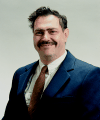 / James M. Goodwin / Professor
/ James M. Goodwin / Professor
 / Noriaki Asada / Professor
/ Noriaki Asada / Professor
 / Jaques J. Vidal / Visiting Professor
/ Jaques J. Vidal / Visiting Professor
 / Yasushi Kikuchi / Assistant Professor
/ Yasushi Kikuchi / Assistant Professor



 / James M. Goodwin / Professor
/ James M. Goodwin / Professor
 / Noriaki Asada / Professor
/ Noriaki Asada / Professor
 / Jaques J. Vidal / Visiting Professor
/ Jaques J. Vidal / Visiting Professor
 / Yasushi Kikuchi / Assistant Professor
/ Yasushi Kikuchi / Assistant Professor
The present members of the Multimedia Software Systems Laboratory have diverse backgrounds and research interests. The primary areas of expertise of the current members include numerical analysis, nonlinear dynamics, complex systems, real and artificial neural networks, the application of physical principles to computing, genetic algorithms, fuzzy logic, fuzzy systems, nonlinear optimization algorithms, infrared astronomy, physical properties of cosmic dust, interplanetary physics, laser applied measurement technology, applied optics, motion analyses by video camera systems, recognition of facial expression and the like.
Research being done in this laboratory includes studying the use of visualization techniques to enhance the understanding of mathematical problems, for example, investigation of 3D graphs of complex functions using time, color, sound, as the necessary "fourth dimension". The display of zeros or critical points of functions appears to aid in understanding underlying mathematical structures.
Investigation of the role of fractals and fractal dimension is being used to aid in describing complex systems, and in particular in describing the behavior of the human brain. Graphical and mathematical software, including extension and application of FD3, a fast algorithm developed and implemented by one of our members, for fractal dimension computation is being developed. This is being applied to the analysis of mathematical fractals, and of real-life data sets. Among these are digitized responses to various psychological testing procedures, obtained in cooperative research with universities in the U.S. Display and transformation techniques to allow nonlinear data to be understood in several ways, using Fourier transforms, phase space plots, Poincare sections, lagging, and other approaches, are also under investigation.
Other research underway in the laboratory lies in nonlinear and complex systems and dynamics, real and artificial neural networks, the application of physical principles to computing, genetic algorithms, fuzzy logic and the like. Multimedia applications related to these ideas, are also being developed, as is the development of educational courseware and joint projects using Multimedia, hypertext, hypermedia, and virtual reality techniques.
Nonlinear dynamics methods for the control of unstable or chaotic systems (e.g. human heart, multiple trailer trucks backing up, high performance aircraft, economic systems) are becoming prominent, and are under study in this laboratory. Because these methods draw heavily on topology, they can be clarified by interactive graphical presentations. Multimedia display and interaction with controller and controlled system can enhance understanding and support the research.
Infrared camera can see not only thermal state of materials and animals but also chemical bonding state of molecules and atom species through spectroscopic techniques. These techniques can help to recognize human emotion through human surface color, including infrared color. A total system that consists of multi-CCD-cameras, high speed video cameras, infrared cameras and force vector mats system is very useful system to understand human motion and human facial expressions.
Laboratory members have participated actively in scientific meetings, both in Japan and abroad. They are involved in joint research projects involving faculty from such institutions as the University of California, Los Angeles (UCLA) and the University of Texas, in the U.S. They have presented and participated in seminars, and in presentation of scientific results in fully refereed publications.
The laboratory is the coordinator for coursework in computer music and in the interaction of brain waves with physical devices. It has a wide variety of equipment available for use by students and faculty, typically interconnected via the campus network. A coursework in astronomical observation by cooled CCD cameras is coordinated, too. Students learn how to use equipment to get some data into computer system, how to process image data, how to analyze these data and how to study the nature through this courseware project.
Refereed Journal Papers


